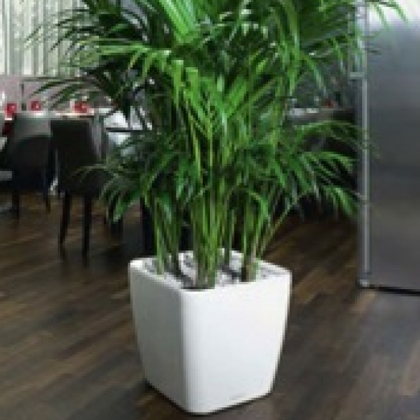Light: Light shade or dappled light indoors. Do not expose to direct, noon sun as it will fade the leaf colors.
Water: High humidity. Keep soil continuously moist throughout spring and summer, and reduce watering in the winter.
Temperature: Prefers warm and humid conditions. Keep above 60ºF if possible.
Soil: A well-drained potting mix.
Fertilizer: Feed regularly with liquid fertilizer throughout growing season.
Category: Plants Options
Related products
-
 Quick view
Quick viewClerodendrum thomsoniae/ Bleeding heart vine/ Glory boomer
Light: Partially shaded site with some direct morning or late afternoon sunshine with minimum temperatures of 7 degrees C. Water: Water your clerodendrum generously in the summer months and do not allow it to dry out. Reduce watering during cooler spells Fertilizer: Plant in well fertilized soil.Read more -
 Quick view
Quick viewHoweia Forsteriana
Light: Find an area that receives indirect light through a window; it does not necessarily need to be an extremely bright spot. Water: Water only when the top inch of soil starts to dry out. Over watering can lead to root rot if the soil mix does not drain fast enough. Fertilizer: Excessive fertilization may cause the tips of lower leaves to turn brown and die. Browning of leaves can also be caused by dry air and/or lack of water.Read more -
 Quick view
Quick viewSansevieria Laurentil
Light: Although they are very forgiving, the sansevieria prefers bright light with some sun. They can adapt to full sun. Water: Let the soil dry between waterings. During winter, reduce watering to monthly, or whenever the soil is dry to the touch. Err on the side of underwatering. Temperature: They prefer warmth and will suffer if exposed to temperatures below 50ºF. Soil: A loose, well-drained potting mix. They will do well in sandier soils. Fertilizer: Feed a mild cactus fertilizer during the growing season; do not fertilizer in the winter.Read more -
 Quick view
Quick viewVriesea splendens – Anthurium
Soil: Grow in media (soil/ soil substrate) that is coarse and well drained. Water: Water thoroughly and allowed to dry slightly before watering again. Over watering will lead to root decay. Light: Anthuriums will take about as much light as you can provide them with-but not direct sunlight. Thus place in a location where they receive filtered sunlight. Temperature: Anthuriums grow best with day temperatures of 25- 32 C, and night temperatures of 20 to 23 C. Higher temperatures may burn the leaves and fade flower color.Read more



Reviews
There are no reviews yet.